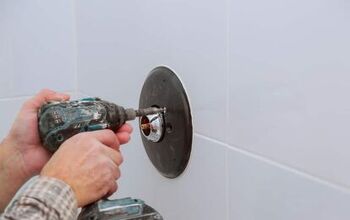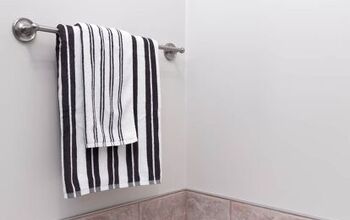How To Remove A Stripped Allen Screw From Faucet (Do This!)

Allen screws are perfect for holding the components of faucets together neatly. However, the issue is when the screws get stripped, and you cannot remove them since the screwdriver doesn’t work to pull them out. So, how exactly do you remove a stripped Allen screw from your faucet?
To remove a stripped Allen screw from your faucet, you will first need to ensure that you have the correct tools for the job. Then, use a screw extractor that fits the screw, drill a pit into the screw and place the extractor in it. Then use an adjustable wrench to help pull it out.
In this article, we will explain how you can remove a stripped Allen screw from your faucet. That way, you can still replace specific faucet components and continue to do the maintenance on it that you need to do.
Do You Need a Faucet, Fixture, or Pipe Repair or Replacement?
Get free, zero-commitment quotes from pro contractors near you.

How To Remove A Stripped Allen Screw From The Faucet
To remove a stripped Allen screw, you will need to use a Torx head screwdriver to do so. However, if you don’t have one, there are other options for tools you can use. You can use a flathead screwdriver or even a drill.
Instructions For Removing The Stripped Allen Screw
Step 1: Gather Your Tools
Before you even begin this project, you will need to ensure you have the correct tools. Here is a list of what you will need:
- Hammer
- Power drill
- Screw extractors
- Metal drill bit
- Adjustable pliers that lock
Step 2: Get The Right Extractor
You will need to make sure that the screw extractor is the right size as you’ll want the head to attach to the screw. If it’s too big or too small, this won’t happen. With screw extractors, there are typically a large variety of sizes, so it’s essential you get the right size.
Step 3: Set Up The Right Drill Bit
Once you have the right size of extractor, then it’s time to find the correct metal drill bit to use. Attach either one of these onto a power drill. You can use either one for the job. Place the bit onto the drill and hold it onto the stripped screw head. You want it to be in the center for the best results.
Step 4: Drill A Pit Into The Screw
Once your bit is centered onto the screw, you will need to drill a pit that’s about 6.5 millimeters. Then, turn your drill to reverse to remove the screw. You need to ensure that you created the right hole, or you won’t be able to get the screw out.
For instance, if the size is wrong, then the extractor isn’t going to fit into the hole to retrieve the screw. Therefore, it’s vital the hole is large enough.
Step 5: Insert The Screw Extractor
Insert the screw extractor into the hole that you drilled into the screw. Then, take a hammer to help drive the extractor into the hole. If the screw extractor is too fat, you will need to create a wider hole.
Then, ensure the extractor is tight on the screw hole so that you can remove it. If it’s too loose, it won’t grip. If the hole is too tight, you won’t have the room you need to maneuver.
Step 6: Use Your Adjustable Wrench
Now, for the last step, you will need to use your adjustable wrench or a set of locking pliers. Get the wrench onto the screw extractor heat and move it around in a counterclockwise manner. The stripped screw will start to come off the faucet when you begin turning it.
Tips For Using A Screw Extractor
For the screw extractor, you will typically have two choices of style. Make sure you choose the one that best allows you to remove the screw you need to remove. Of course, the screw will be drilled away, and then you’ll be able to get the extractor in.
Don’t worry about how hard you are turning the screw, as you may need to use a lot of power to get the screw to budge, depending on how long it’s been stuck in there. The spirals will help by drabbing the walls to more or less help remove themselves.
While screw extractors are excellent, many people don’t like using them because they can destroy what’s left of the drive head. They also make the fastener weak.
Other Ways To Remove A Stripped Allen Screw
You can do a few other things to remove the stripped Allen screw as well, such as using a rubber band to remove the screw.
The Rubber Band Method
To create a grip onto the stripped screw, you can place a rubber band over the stripped area. Then, take a flathead screwdriver and drive it into the rubber band. The rubber will help fill any of those gaps so that the screwdriver can get a better grip and remove the screw as you turn it counterclockwise.
After that, insert a screw extractor of the right size in the screw and remove the stripped set screw. However, this may be hard to do if the screw is completely stripped. In that case, you might need to use the screw extractor method instead. This method only works well if the fastener is small or if the stripping is mild.
Using Pliers
Something else you can use is either vice grips or pliers. However, you need to ensure that the head is exposed; otherwise, you might run the risk of breaking it, which will make it nearly impossible to remove. Also, the pliers need to be locking or else; this will make the job more difficult.
Latch onto the screw tightly and turn it counterclockwise. The head of the screw should slightly dent so that it lets you know you have a good grip. Then, turn it slowly so that it can loosen out of where it’s stuck at.
Using A Flathead Screwdriver
Something you can always try is turning the screw into a flathead. This is also easy to do if the head of the screw is intact and reachable. You can use a Dremel or a file to make a little groove into the head, much like a flathead.
When the groove is the depth you want it to be, you can use a flathead screwdriver to attach it to the screw and remove it. You will need to apply some pressure and turn slowly to get it removed. However, don’t use this method if you don’t want to damage the head of the screw, as it is sure to do that.
This method also won’t work if the head is too thin or if the cut is not in the center, as it will most likely break. Plus, not to mention, you may damage your faucet if the screwdriver slips.
Use A Different Drive Style
Just like turning the screw into a flathead, this technique also will abuse the head of the screw. However, at this point, you’re probably desperate to get the screw out of the faucet anyway. So, you will need to get a driver size and style that is a little larger than the original one.
For instance, if your driver style is a flathead, you’ll want a slightly larger one. Then, put the larger part inside of the fastener head and lightly tap it using a hammer. The goal is to drive the screwdriver into the head so that it latches. Although you need to make sure you don’t do this too hard, otherwise it will end up breaking the head.
Severely Stripped Heads
If your screw thread is too stripped, then this technique is perfect for you. You could even use a slightly larger Torx driver that has a flat or hex head if the screw is a Philips base. However, the flathead screws have sharper edges and will dent faster, so be careful so that you don’t break anything.
It’s crucial for you to know that your driver may get damaged if you use this method. Just be careful and take your time doing it. Otherwise, you’ll be left without a driver, and you’ll need to buy a new one before you can finish this job.
What If You Can’t Remove The Screw?
If you can’t remove the screw, you always have the option of getting a friend or family member to help you. If the screw is in the faucet and not the base of the sink, then it may be a good idea to get a new faucet.
You can always call for professional assistance. This may cost about $30 to $60, depending on the company you go through. However, they cannot guarantee they won’t break your faucet or screw, so it may be a good idea to save your money and try it yourself anyway.
Do You Need a Faucet, Fixture, or Pipe Repair or Replacement?
Get free, zero-commitment quotes from pro contractors near you.

Wrapping It Up
Stripped screws are not fun to deal with, as they’re usually tough to remove. However, if you have the right tools, you can ensure that you can get the screw out. You need to make sure you have the right size extractor and drill bit to do so, though, otherwise, it’s not going to work.

Heather is a passionate writer who loves anything DIY. Growing up, she learned everything from home repairs to design, and wants to share her tips with you. When she's not writing, she's usually hiking or searching for her next DIY project.
More by Heather Robbins



























